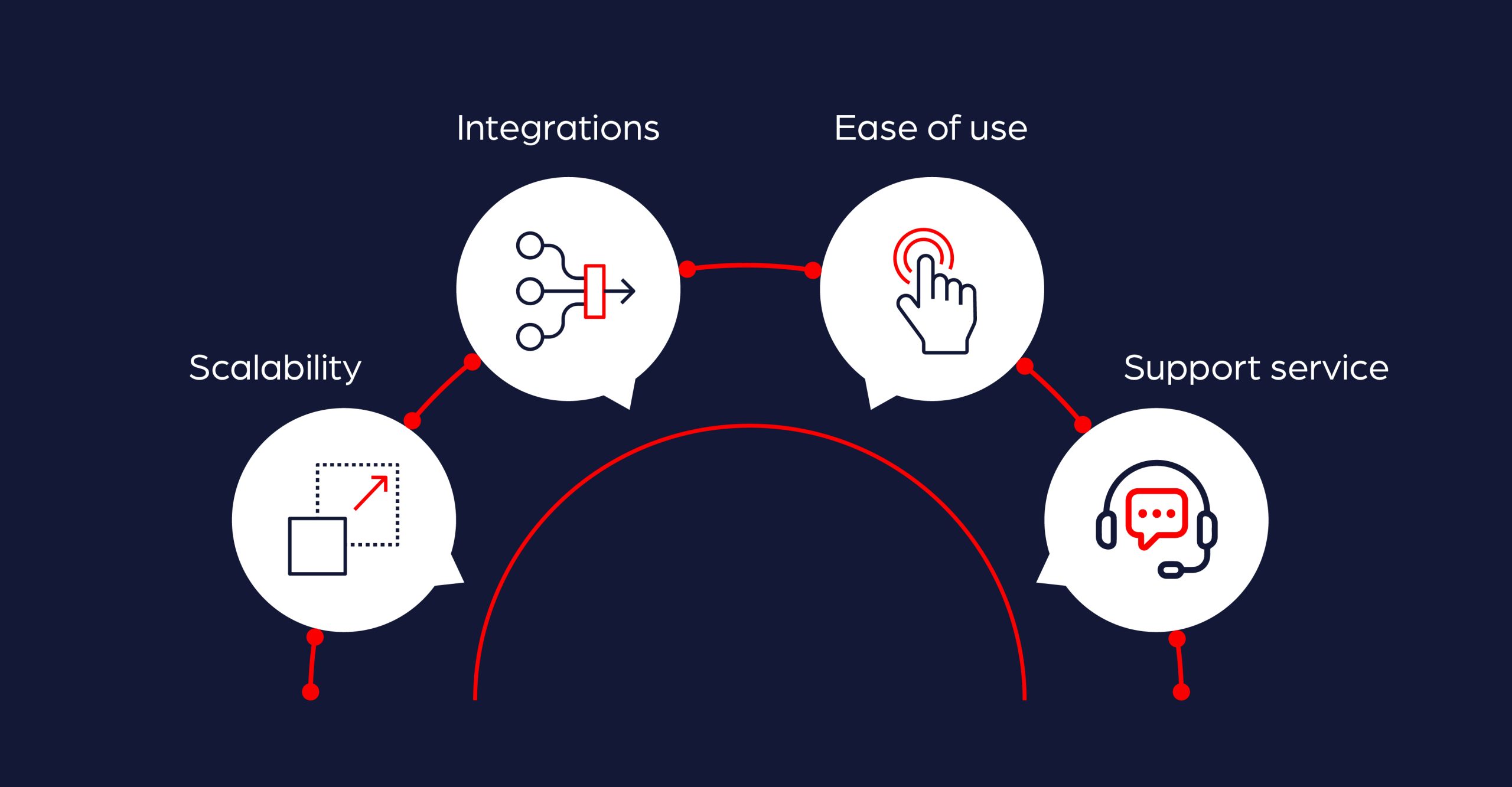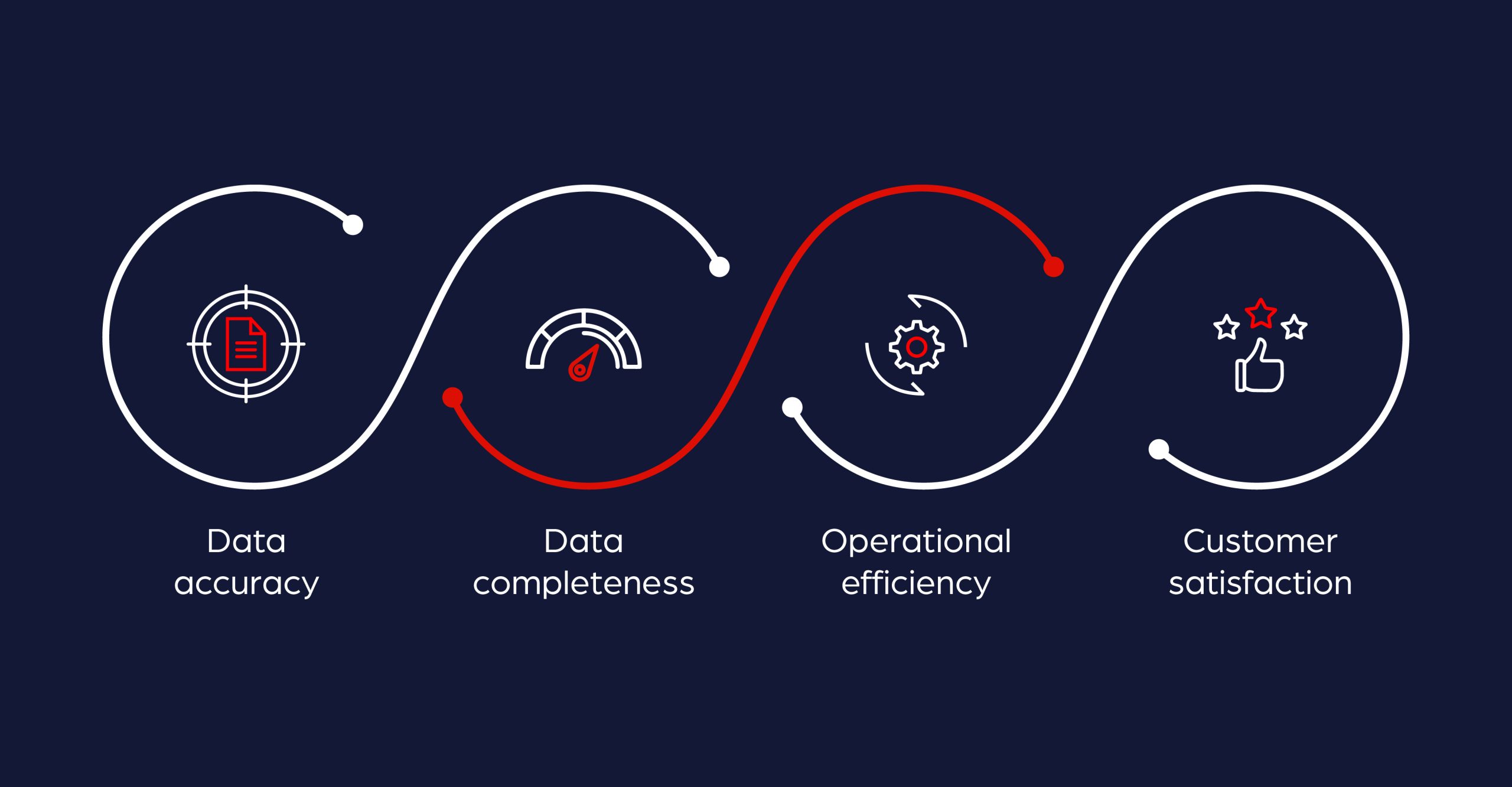
Effective management of product information is a critical aspect of successful business strategies as it helps improve data quality, consistency, and compliance [1]. With countless products under your belt, it’s imperative to have a well-organized, consistent, and up-to-date system for managing product information. This is where Product Information Management strategy and technology come into play.
Mastering the art of Product Information Management (PIM) requires a combination of efficient processes, cutting-edge technology, and a comprehensive strategy. It offers online retail businesses, including yours, a host of advantages. By consolidating and harmonizing product data, your business can streamline operations, optimize marketing efforts, and deliver a unified product experience across all channels.
Join us as we navigate the intricacies of product information management and provide practical tips to help you develop a successful PIM strategy.
Here’s what you need to know before you start:
- The Importance of PIM for Businesses
- Key Components of a Successful PIM Strategy
- Choosing the Right PIM Software
- Steps to Implement a PIM System
- Integrating PIM Software with Other Business Systems
- Measuring the Success of Your PIM Strategy
- Conclusion: Unlocking the Potential of PIM for Your Business
The Importance of PIM for Businesses
Customers today, have access to a wealth of information at their fingertips, which makes having accurate and consistent product details crucial. Product information management allows you to centralize and manage all product data, ensuring that it is up-to-date, accurate, and accessible to all relevant stakeholders.
One of the main advantages of implementing a product information management strategy is improved operational efficiency through technology. With the right PIM software, you can manage a centralized repository for all product information, you can eliminate redundancies, streamline processes, and reduce errors. This not only saves time but also minimizes the risk of inconsistencies in product data across different sales channels.
Additionally, PIM technology enables you to enhance customer experience. With consistent and detailed product information readily available, customers can make informed purchasing decisions. This builds trust and loyalty, increasing customer satisfaction and repeat business.
Furthermore, a sound PIM strategy is crucial in driving revenue growth. By optimizing marketing efforts through better product information management, your business can effectively target your audience and increase conversion rates. Product information management also allows for rapid product launches and updates, enabling you to stay ahead of the competition and capitalize on market trends.
Key Components of a Successful Product Information Management Strategy
To develop a successful product management strategy, you must first define clear objectives. This involves determining what the business aims to achieve through PIM, such as improving data accuracy, increasing operational efficiency, or enhancing the customer experience. Clear objectives provide a roadmap for the implementation and evaluation of the PIM strategy.
Another important component of a PIM strategy is data governance. Establishing data governance policies and processes ensures that the data is accurate, consistent, and reliable. This involves steps like defining data ownership, establishing data standards, and implementing workflows for data management. Data governance ensures that the right people have access to the right information at the right time, enabling effective decision-making.
Choosing the right PIM software is also critical. You should evaluate different PIM solutions based on your specific needs and requirements. A robust PIM software should provide a user-friendly interface, seamless integration with existing systems, and the ability to handle large volumes of data.
Next off, you can implement processes to validate and verify product information periodically. This includes checking for errors, inconsistencies, and missing data. Regular data validation minimizes the risk of inaccuracies (obsolete data) and ensures that product information is reliable and trustworthy.
Moreover, you can establish a robust data enrichment process. This involves enhancing product information with additional details such as rich media, customer reviews, and cross-selling opportunities. Data enrichment improves the customer experience and helps businesses differentiate themselves from competitors.
Choosing the Right PIM Software
Selecting the right PIM software is a crucial step in implementing an effective product information management strategy. With a plethora of options available in the market, you should carefully evaluate and compare different solutions based on your specific requirements.

One important factor to consider is scalability. As businesses grow and expand their product lines, the implemented PIM system should be able to accommodate increased data volumes and support future growth. A scalable PIM solution will remain relevant and effective in the long run.
Integration capabilities are another key consideration. The PIM software should seamlessly integrate with existing systems such as ERPs, CRMs, and e-commerce platforms. This allows for efficient data exchange, eliminates redundancies, and ensures consistency across different business processes.
Ease of use is also important when choosing PIM software. One with a user-friendly interface that is intuitive will be easy to navigate. This is particularly crucial for non-technical users who will manage product information daily. A user-friendly interface reduces the learning curve and promotes efficient usage of the PIM system.
Lastly, you should assess the support services offered by your PIM software provider. A reliable support team can assist with the implementation, training, and troubleshooting of the PIM system as needed. Timely and effective support is crucial to ensure smooth operations and minimize downtime.
Steps to Implement a PIM System
Implementing a PIM system involves several steps that must be followed to ensure successful deployment. It starts with knowing what you want to achieve, gathering and sorting product information, then using PIM technology to manage it all centrally. Here are the steps in more detail:
1. Data governance framework: A data governance framework ensures ongoing data quality and consistency. This involves defining roles and responsibilities, implementing data validation processes, and monitoring data integrity. Regular audits and reviews should be conducted to identify and rectify any data issues.
2. Project scope: The next step is to define the scope of the project. This involves identifying the key stakeholders, understanding their requirements, and determining the specific functionalities and features that your PIM system should have.
3. Data gathering and consolidation: Once the scope is defined, you need to gather and consolidate all product data from various sources. This includes information such as product descriptions, specifications, images, pricing, and inventory levels. Data cleansing and standardizing are essential at this stage to ensure consistency and accuracy.
4. Data mapping: The next step is to map and categorize the product data. This involves creating data models and taxonomies (i.e., characterization, identification, and classification) that align with your business’s product hierarchy and structure. Mapping and categorizing the data allows for efficient searching, filtering, and organization of product information.
5. Configure PIM software: Configure your PIM software based on the defined scope and requirements of your business. This includes setting up data attributes, workflows, access controls, and other system configurations. Make sure that the implementation or configuration aligns with your business’s data governance policies and processes.
6. Integration: Once your PIM system is configured, it needs to be integrated with other systems such as ERPs, CRM, and e-commerce platforms. This ensures seamless data exchange and synchronization across different systems, enabling efficient business operations and a unified product experience.
7. Employee training: Next, you need to train your employees to use the PIM system effectively. Training should cover topics such as data entry and updates, data management, workflows, and reporting. Providing comprehensive training ensures that employees can maximize the benefits of the PIM system and contribute to its success.
Experience the Capabilities of PIM Technology in Real Time
Integrating PIM Software with Other Business Systems
By integrating your PIM technology with your other systems, you can streamline your operations, eliminate redundancies, and ensure consistency across different channels.
Integrating your PIM software with ERPs gives you the ability to automate data synchronization. This ensures that product information, pricing, and inventory levels are always up-to-date and accurate. Automated synchronization reduces manual effort, eliminates errors, and improves operational efficiency.
Integrating PIM technology with a CRM enables your business to have a unified view of customer interactions and product information. This allows for personalized marketing campaigns, targeted cross-selling, and enhanced customer satisfaction. With access to comprehensive customer and product data in one system, you can optimize your sales and marketing efforts.
Integrating PIM software with e-commerce platforms is also crucial for delivering a consistent and unified product experience across all sales channels. This ensures that customers receive accurate and consistent product information, regardless of the channel they use to interact with the business.
Measuring the Success of Your PIM Strategy
Measuring the success of a PIM strategy allows you to evaluate its effectiveness and identify areas for improvement. Several key performance indicators (KPIs) can be used to measure the success of a PIM strategy. Some top KPIs include:

1. Data accuracy: Your business should measure the percentage of accurate product information in the PIM system. This can be done by conducting periodic data audits and comparing the data in the PIM system with external sources. High data accuracy indicates that the PIM strategy is effective in maintaining reliable product information.
2. Data completeness: This measures the percentage of complete product information in the PIM system. Businesses should define data completeness criteria based on their specific requirements and industry standards. High data completeness ensures that customers have access to all the necessary information to make informed purchasing decisions.
3. Operational efficiency: You should measure the time and effort required to manage product information before and after implementing a PIM system. A decrease in manual effort and time spent on data management indicates improved operational efficiency and the success of the PIM strategy.
4. Customer satisfaction: This can be done through customer surveys, feedback, and reviews. Businesses should evaluate customer satisfaction levels before and after implementing a PIM system. An increase in customer satisfaction indicates that the PIM strategy is effective in enhancing the customer experience.
Conclusion: Unlocking the Potential of PIM for Your Business
By mastering the art of product information management you can streamline your business operations, enhance the customer experience, and drive revenue growth.
Integrating PIM technology with other business systems and measuring the success of a PIM strategy are crucial steps in unlocking the full potential of product information management. By adhering to the best practices covered, you can ensure meticulous product information management and gain a competitive edge in today’s dynamic marketplace.
That said, it’s important to pace yourself. Mastering the art of PIM may seem daunting because it involves many steps and takes time. But with the right strategy, technology, and dedication, you can navigate the complexities of product information management and reap the numerous benefits it offers. So, embrace the power of PIM and take your business to new heights of success in the digital age.
Reference –
